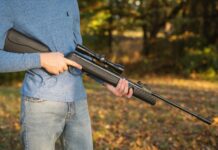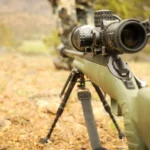In the vast expanse of the animal kingdom, power is often exemplified not just by size or speed but by the sheer force of an animal’s bite. This force, a lethal combination of anatomy and strength, defines an apex predator’s ability to capture and consume prey, assert dominance, and even defend territory.
Among the impressive list of creatures with formidable jaws, the lion, often dubbed the ‘King of Beasts,’ holds a respectable position. But where exactly does this majestic big cat stand in the rankings of the strongest bite forces in the animal world?
Table of Contents
What is Bite Force, Exactly?
At its core, bite force is a measure of the pressure exerted by an animal’s jaws when biting down. Think of it like the pressure one might feel when pressing down on something using one’s hand, but in the case of animals, particularly with powerful jaws, this pressure is exponentially greater and can be the difference between life and death in the wild.
This force is often measured in units called PSI (pounds per square inch) or kg/cm², which gives an understanding of how much force is applied over a particular area.
Several factors play a crucial role in determining an animal’s bite force. The jaw structure is paramount; the mechanical advantage provided by the length and shape of the jaws, along with the placement of the teeth, can significantly impact bite power. Next, muscle power is essential.
Strong, robust muscles surrounding the jaw allow for a more forceful clampdown. Finally, the teeth anatomy complements bite force. In lions, for instance, their long and sharp canine teeth are designed to pierce and hold, while their carnassial teeth at the back help in shearing flesh off the bone.

The Lion’s Bite Force: Numbers and Comparisons
When it comes to raw power, the lion’s bite force is a force to be reckoned with. Adult male lions have a bite force that averages around 650 PSI (or approximately 45.86 kg/cm²). To put this in perspective, it’s a force more than enough to crush a human skull or snap a spine. However, as with many things in nature, everything is relative.
Compared to other animals, especially other big cats, the lion’s bite isn’t the strongest, but it’s specifically adapted for its hunting needs and lifestyle. For example, the jaguar, renowned for its ability to pierce through skulls and turtle shells, has a bite force even stronger than that of a lion.
To offer a clearer picture, let’s compare the lion’s bite force with other big cats and notable African savannah predators:
Comparison Table: Bite Force Among Various Animals
It’s evident from the table that while the lion’s bite is formidable, some animals, particularly the crocodile and jaguar, possess even more powerful jaws. However, it’s crucial to remember that bite force is only one aspect of an animal’s hunting and defensive capabilities.

Anatomy Behind the Bite
A closer look at the lion’s anatomy reveals why it possesses such a powerful bite. The lion’s skull is robust, with a broad muzzle providing ample space for large jaw muscles. The temporalis and masseter muscles, primarily responsible for the up and down movement of the jaw, are well-developed in lions, allowing them to exert immense pressure when they bite.
Furthermore, a lion’s canine teeth, measuring up to 10 cm in length, are not just for show. These sharp, conical teeth are designed to pierce deeply into the flesh, effectively clamping onto prey. Once the lion has a firm grip, its powerful neck muscles come into play, allowing it to drag or even suffocate larger prey.
Behind the canines, the carnassial teeth play a critical role. These are specialized molars and premolars that work like scissors, cutting flesh as the lion chews, ensuring that meat is sheared off the bone and consumed efficiently.
All these anatomical adaptations combined, from the skull structure to the muscle placement and teeth design, make the lion’s bite a potent tool, tailored for its life in the wild.
Why is a Strong Bite Crucial for Lions?
A potent bite is more than just a show of strength for lions; it’s a survival tool. In the unforgiving landscapes of the African savannah and the limited regions of India where Asiatic lions reside, every hunt counts.
A lion’s strong bite ensures it can efficiently penetrate the thick hides of its prey, typically large ungulates like wildebeest or zebra. Once the lion latches onto its prey, the bite force aids in suffocating it, a common technique employed by these big cats.
Beyond hunting, a robust bite plays a crucial role in the social dynamics of lion prides. Males frequently spar for dominance and control over a pride, and in these disputes, displaying a powerful bite can be a deterrence or a weapon.
Additionally, territorial clashes between different prides or nomadic lions can get fierce, with bite force playing a significant role in establishing dominance and securing territories.

Bite Force vs. Killing Technique
While the bite force of a lion is certainly impressive, it’s only a part of the equation when it comes to hunting success. Lions, unlike some other big cats, often rely on teamwork and strategy. Once prey is isolated and ambushed, lions use their weight and strength to knock it down.
The actual killing technique usually involves suffocating the prey by biting down on its throat or sometimes its mouth and nose, cutting off air supply. This method contrasts, for instance, with jaguars that employ their superior bite force to pierce the skull or brain of their prey, ensuring a quick kill.
Similarly, cheetahs, despite having a weaker bite force compared to lions, rely on their unmatched speed and agility to chase down prey, using their bite to strangle and incapacitate.
It’s evident that while bite force is a significant factor, the technique and strategy employed are just as crucial, if not more, in determining hunting success.
Frequently Asked Questions
Learn More About Lions
- Lion: Characteristics, Diet, Facts & More [Fact Sheet]
- Lion Teeth: Nature’s Deadly Arsenal
- Lion vs. Elephant: Interactions & Confrontations of Two Heavyweights
- Lion vs. Crocodile: Confronting Two of Nature’s Titans
- Mountain Lion vs. Lion: Main Differences & Who Would Win a Fight?
- Lion vs. Lioness – How Do They Differ and What Are Their Roles in The Pride?
- Komodo Dragon vs. Lion: Detailed Comparison & Who Would Win a Fight?
- Lion Sleep Patterns: How Many Hours Do Lions Sleep?
- Are White Lions Real? Do They Occur in the Wild?
- Rhino vs. Lion: A Colossal Confrontation











































